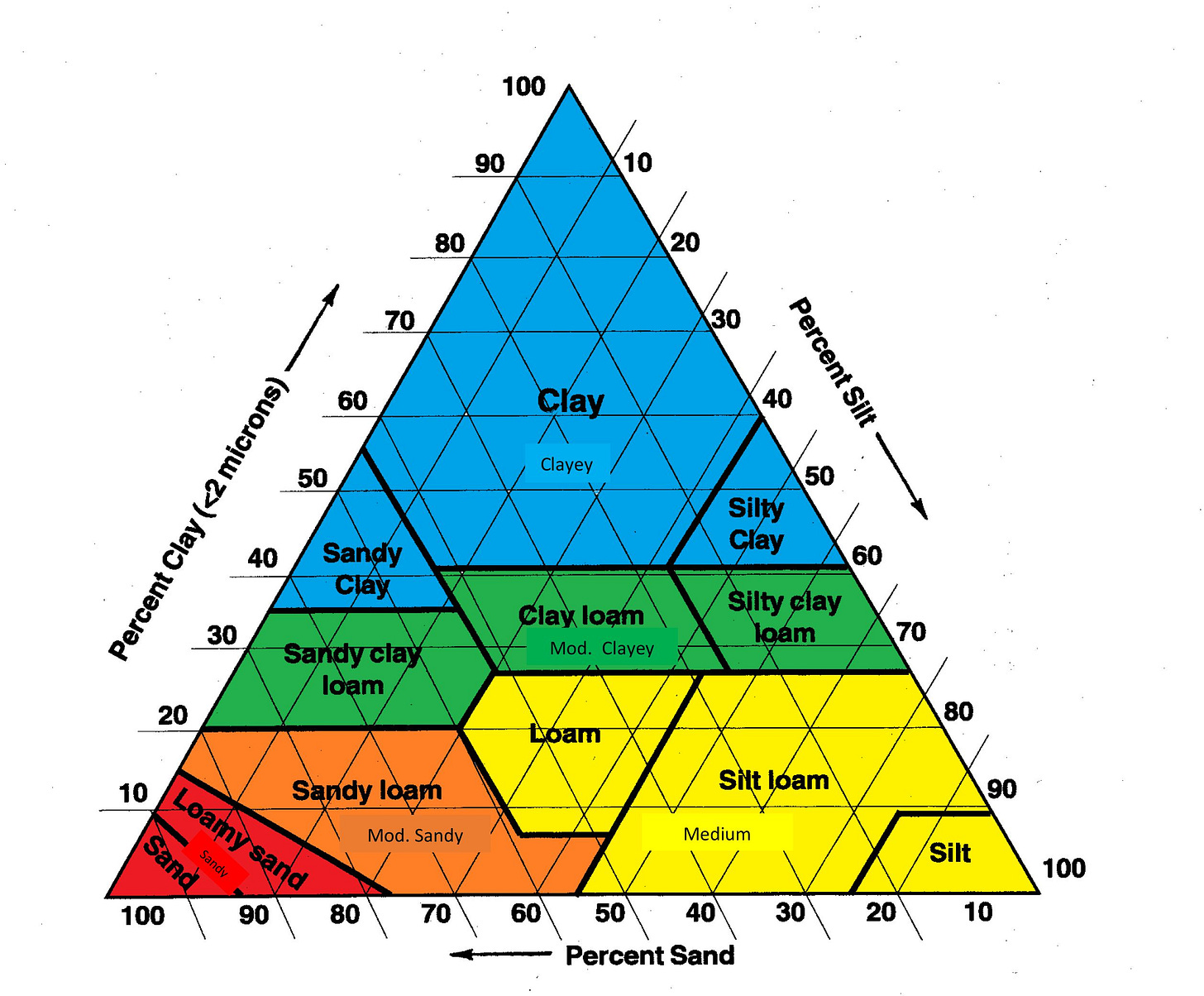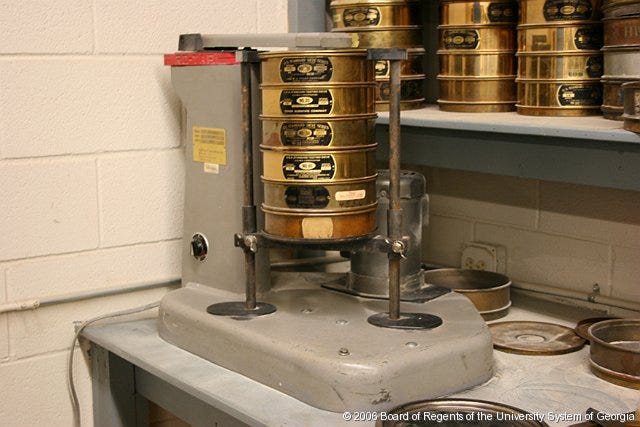The other day on twitter, Aaron Bergman asked: “where height restrictions per se are the issue, why haven’t developers started building vertically but *down*, underground?”
My reply thread (compiled* below) got a LOT of attention. Seems people like to get the low-down on what’s going on down low. However, I thought I’d give a deep dive on dirt that doesn’t suffer the pitfalls of twitter’s character limit. So if you came here from twitter, or just want to get right into it, you can skip the next section.
Civil engineer here! There are some problems that emerge when we excavate deep underground, that increase costs significantly. I'll explain a couple of these in the thread below! First of all, all soil is not created equal. In areas with shallow bedrock, digging out a large volume of space would be prohibitively expensive. In areas without bedrock, the walls have to be built very thick and deep to resist the pressure of the surrounding soil, see below.
All that volume that is filled with soil within the walls is space that has to be excavated, and then refilled and compacted, layer by layer to make sure that there is no loose soil in between the walls. You could also use concrete between the walls, to resist the pressure, but you essentially need the walls anyways if you're excavating deeply because what is going to keep the soil from caving in onto the slab while you work on it? Then we get to the question of the water table, which in some places is very shallow! How do you excavate to -200ft... when the groundwater starts to flood your hole at -40ft? This is a very difficult problem and usually involves a ton of pumps, which break a lot because the groundwater is usually mixed with gritty soils. And heaven forbid it rains while you're in that hole! The second problem with water beyond infiltration and working conditions is that it's presence can put strains on the structure itself, a concrete tube stuck into soil experiences buoyancy forces just like a boat, so having to displace depth×the footprint of your buildings... worth of water can really put a lot of force on the building, which can cause it to "float" up through the soil. This necessitates some (expensive) changes to your foundation design, because now you have forces, some of which are dynamic (flooding) in more directions. See below.
The deeper you go, the more expensive and risky it is to move the next piece of dirt, and the thicker your walls and foundations must be. By contrast air moves itself. Plus the building code is already made for skyscrapers, so there's a first actor disincentive. This means that often, even where there is a height restriction in place, developers choose not to build down as far as they could. One thing to keep in mind is that they may build taller in cities w/o restrictions as compared to ones with in order to recoup "lost floors". And because changing their building plan from 50 to 75 floors in the unregulated height city is still cheaper than going from 0 to -25 excavated floors in the regulated one, the floors more often just move between markets rather than above/below ground. Edge cases exist but 🧵.
Okay, so that probably gave you a rough idea of what’s going on underneath our feet, and how it increases construction costs, but you probably have some questions. Below, is a crash course in the first principles of soils science. It’s going to be a technical post, so dig deep. ;)
To start off, many have asked: “What is the ground made of?”
On the most basic level, soil (and also rock, but let’s leave that for another post). But what do we mean by that exactly? Soil is not just one thing, it’s a mixture! But a mixture of what? What immediately comes to my mind is the solids, these are the clays, the silts, the sands, the gravels, the dust, and all the stuff that comes with it, maybe even some organic matter if you’re near enough to the surface! But this image of soil misses out on a key player in the dynamic conditions of the subterranean world. Water! (And to a small degree other liquids). That’s right, water is an integral part of understanding how soils work. At least in my opinion, the interaction between the water and the solids in any given soil is usually the root cause of some of the most interesting phenomena of soil dynamics such as:
Liquefaction:
This video shows the phenomena known as liquefaction, where when a saturated (gaps full of water) soil is vibrated (such as in an earthquake), the response of the water to the vibration allows the soil particles to slip past each other, where they had previously been held in place. This is what causes the leftmost house and two cars to sink. they are too heavy and displace the loosened soil-water matrix. The air-filled ping-pong ball floats up, because the soil above it is loosened and so there is nothing to resist the water (which is heavier than the ball) from rushing in all around it’s bottom half, averaging out to an upwards buoyant force. The house on the right stays standing, thanks to the piers that connect it to the floor of the machine (representing the bedrock). The house in the middle however, employs a simple “raft foundation” which allows it to spread out the weight of the structure and take advantage of the buoyant force to float the structure on top of the liquefacted soil.
Infiltration:
Water also flows into and through soil, which is known as infiltration. When it rains, where does the water go? Not all of it evaporates or runs off the soils surface, much of it infiltrates into the soil, seeping into and filling the previously air filled voids between the individual grains of soil.
If you’ve ever overwatered a potted plant, you’ve experienced infiltration firsthand. The water has filled up the voids in the soil to the point where there are no voids left with the necessary properties (adhesion forces) to hold water against the force of gravity. Thus, the water flows through the cylinder of soil in the pot, and out the bottom, getting your feet wet. But why does it flow so quickly through some soils like sand, and so slowly through soils like silt, or seemingly not at all through soils like clay? This is because each of these soils is made up of different material, with different rates of hydraulic conductivity. This concept of voids within soil is where we brush upon an important concept in soils sciences. The three phase soil diagram.
Above, is a soil in it’s undisturbed form. You can see the grains, the spaces in between the grains, and the water that fills some of that space. Below, is a representation of each share of the soil, divided amongst it’s solid, liquid, and gaseous components. These proportions are measured both as volumes and as weights, which become critically important in the modelling of soil mechanics and behaviour.
Let’s take a look at some edge case soils to gain a better understanding of how the three phase diagram works. Let’s say just for fun, we have a soil where Vv (Volume of voids) is close to 0. This means that the soil is extremely dry, and also packed extremely densely. This might be some sort of fine dust, which has been packed together by pressure or perhaps some very dry, thick clay. Now let’s consider the opposite, where Vs (Volume of solids) is close to 0, if Vw » Va, this might be a thin mud which flows very quickly, or vice versa, a very dry pile of pumice.
But how can we explain the differences between clay, silt, and sand?
Let’s take a look at the chart below:
What determines whether a soil particle is classified as Sand, Silt, or Clay is its relative size. Sand particles are large and gritty, whereas silt particles are medium sized, and clay particles are small. This may seen unintuitive, as I’m sure we’ve all seen globs of clay bigger than the size of our fists, but the globs are actually many tiny clay particles, some air, and some water, stuck together. When each of these soils is stuck in a drying oven, broken up, and sent through a series of sieves, it becomes clear that the sand particles are caught by larger diameter sieves, then the silt particles, and lastly the clay, which comes out as a fine dust. This process is called sieve analysis and based on the amount of soil passing through each standard size of sieve, the gradation of the soil can be plotted, shown below for a few different soils.

The size of the grains that make up the soil change how it behaves. For instance, large grained soils are generally better at bearing weight and resisting strain, as shown in the graph and figure below.
These figures, from “Grain Size Effect on the Mechanical Behavior of Cohesionless Coarse-Grained Soils with the Discrete Element Method” by Wen et al. show how the soil grain size affects the ability of the soil to resist a load. When the grain size is large, the strong force chain (shown in the second figure) is able to take on a larger proportion of the total force (represented by thickness of the line) as compared to the figure on the right, with smaller grain sizes. This is because as the diameter decreases, the # of particles increases, and because the chain of support is made up of particles wedged against one another, the fewer particles there are, the fewer planes of failure there are in the strong force chain. Therefore, the soil with the larger particle size can resist larger loads, while the soil with the smaller particle size allows for its grains to slip past each other more often, weakening the ability of the soil to resist the loading.
So, now that we are armed with the basics tenets of soils science, what’s next? Well, when it comes to what’s underground, you can always go deeper. Geotechnical engineering is one of the more empirical areas of study, so where there are rules and models interesting exceptions always abound.
There is so much more to learn about soil mechanics, geology, hydrology, and I am so excited to cover exciting topics like compaction, dams, aquifers, and soil rehabilitation in future posts! We’ll examine some interesting case studies, and I’ll be giving a guided tour of my personal area of specialization, underground utilities. I hope you are as over the moon as I am about what’s beneath our feet.
Thanks so much for reading!
-Connor, Of All Trades.
Like this article? Please Subscribe!
Know someone who would? Please Share!
And if any of you readers out there are secretly crypto millionaires and would like to leave a tip, please check out https://alltrades.eth.xyz















I am a big fan of underground parking, but I've never seen one deeper than 4-5 levels down. How deep can you go with a parking structure?